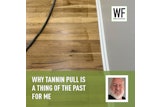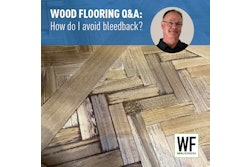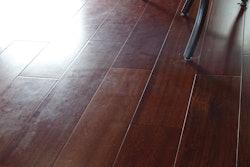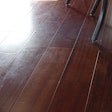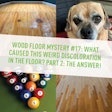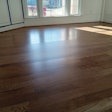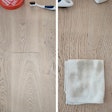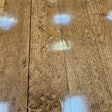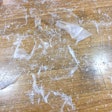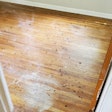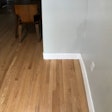The Problem
I was called out to a site by our regional sales representative to review a claim for approximately 650 square feet of factory-finished birch flooring that was slightly cupped and had peeling finish in a few areas. The installation was in a recently renovated 150-year-old home in Quebec. The floor had been installed for about two months before the problem began.
The Procedure
The wood flooring was a 3 1/2 -inch-wide (90 mm), 3/4 -inch-thick (18 mm), solid Asian yellow birch floor prefinished with a high-gloss aluminum-oxide finish. The installation took place in late July and was over an elevated porchlike area that was properly enclosed underneath. The subfloor was a layer of 1/2 -inch plywood over 1-inch pine boards. The HVAC and humidity control system had been running in the house at the time of installation, and the flooring had been acclimated properly and installed over #15 asphalt felt paper.
The Cause
My rep had visited the site earlier and taken numerous moisture content and humidity readings, and other than a few slightly high MC readings in one closet, we could not find any indication of moisture problems. Several boards had expanded and were cracking, and the topcoat finish was peeling. The subfloor had a MC of 8.5 percent, and the flooring MC measured 8 percent. Relative humidity at the time of inspection was 45 to 50 percent—within the expected range. The installation looked very professional and appeared to have been done "by the book." Perplexed, I was concerned that somehow we may have had an under-cured batch of the UV coating on the wood flooring.
Then, I bent down to take a closer look at the boards and noticed a white powder between them. It appeared to be drywall compound that had reconstituted and rehardened. I then asked the homeowner if any drywall work had been done in the home recently, and she told me that, due to mold problems, the contractor had torn out all the original plaster and lathing and replaced it with drywall.
After this conversation, we had a good idea of what had happened to the floor. The flooring was installed prior to the drywall being taped. After taping, the contractor sanded the walls, creating lots of dust. The contractor's helpers vacuumed up most of the dust but could not get the residue, so they wet-mopped the floor to remove the residue, leaving the customer a nice, clean work site. The mopping seemed to have turned the dust back into compound and forced it between the wood flooring boards. That expanded the flooring, which caused cracking in the factory finish.
How to Fix the Floor
In this case, the damaged flooring had to be removed and replaced.
In the Future
During a further discussion with the contractor's helpers, they said they were unaware that you aren't supposed to wet-mop hardwood flooring (they did say they dried up the floor real well after they wet-mopped it, and they were sure they got all the dust off!). We can never assume that people—from homeowners to the builders to the installers doing the work—are as well educated about our products as we hope they are, even about topics that seem obvious (like not wet-mopping a wood floor). So, as an industry, we need to take every chance we get to educate and inform.









